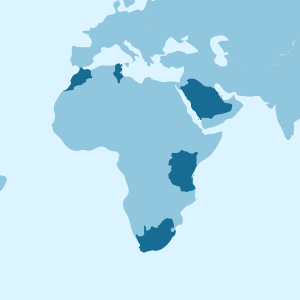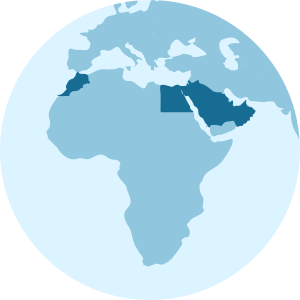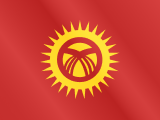Study in the USA: Learn all you need
Do you want to study in the United States as a foreigner? Read all about the educational system, the requirements and the steps to follow.
You’ve probably imagined yourself on the campus of universities like Harvard or Stanford, studying in their classrooms and experiencing what it’s like to learn in a country as diverse as the U.S., with one of the most prestigious education systems in the world. It’s no surprise that over a million international students choose this destination every year to take their future to the next level. The USA is one of the most popular places to study abroad—but getting accepted isn’t easy. Want to know how you can study in the USA as an international student?
Between requirements, visas, and paperwork, the process can feel overwhelming. To help you prepare for your journey to the U.S., this article will walk you through everything you need to get started—from top academic options to costs and the key steps for enrollment.

How does the education system work in the United States?
The U.S. education system is one of the most diverse and flexible in the world, designed to adapt to each student’s needs. It’s structured across multiple levels, allowing for a highly personalized learning experience at both the undergraduate and graduate levels.
Basic education is divided into three stages: elementary school, middle school, and high school, which lasts four years. Upon graduating from high school, students earn a diploma that qualifies them for higher education.
At the university level, undergraduate programs typically last three to four years, leading to degrees like an Associate’s or Bachelor’s. Graduate programs, including master’s and doctoral degrees, can range from one to six years, depending on the field of study. One of the key advantages is the flexibility to customize your coursework and choose areas of specialization that align with your interests and goals.
A defining feature of the U.S. education system is its focus on active student engagement. Programs often include extracurricular activities, research projects, and close interaction with professors and mentors. Many universities also provide opportunities for international exchange programs and internships.
Requirements to study in the United States as a foreigner
Getting accepted into a U.S. educational institution as an international student isn’t easy. It requires meeting various academic and administrative requirements. While the process may seem overwhelming, understanding what you need in advance will help you stay organized and avoid unnecessary hurdles.
Some of the key requirements include a student visa, academic transcripts, and language proficiency tests. Let’s take a closer look at what you’ll need to apply:
- Admission letter: An acceptance letter from an accredited U.S. university or college.
- Student visa: You will generally need a U.S. student visa F-1 (for academic studies) or M-1 (for technical or vocational programs).
- Language test: Submit tests such as TOEFL or IELTS to prove your level of English, except in programs that do not require it.
- Academic documentation: Transcripts of previous studies translated into English and, where applicable, accredited.
- Financial proof: Evidence of financial solvency to cover tuition, accommodation and living expenses. Some universities request bank statements or sponsorship letters.
- Medical insurance: Have a policy that covers medical emergencies during your stay in the country.
- Payment fees: Pay the application fee and other associated fees, such as the SEVIS visa fee.
- Recommendation letters: Academic or professional references are required for many programs.
- Admission tests: Tests such as the SAT, ACT or GRE depending on the level of study to which you are applying.
Each university may have additional requirements depending on the program. Please review the admission criteria of the institution you’re interested in.

Steps to study in the United States as a foreigner
Now that you understand how the U.S. education system works and the general requirements for studying there, it’s time to go over the steps to turn your dream into reality. While getting into U.S. universities can be more competitive than in other countries, the process itself is quite similar. Here’s what you’ll need to do before setting foot on your new campus:
1. Evaluate universities and courses in the USA
Before taking any steps, the first thing you should do is thoroughly research universities and programs that align with your academic and professional goals. The USA offers an impressive range of educational options, from prestigious universities like Harvard and Stanford to public institutions with highly specialized programs.
Look into university rankings and visit each school’s official website. Many offer tools to help you explore their programs and requirements. Reading reviews from international students can also give you a more realistic idea of what to expect.
2. Review financing options in the USA
Have you figured out how you’re going to fund your experience? Studying here can be expensive, but there are plenty of options to help cover the costs. Scholarships are one of the most popular choices. You’ll find both government-funded grants and programs offered directly by universities.
You could also look into student loan programs, sponsorships, or part-time jobs allowed under your student visa. Additionally, some states and universities offer reduced tuition for students who have outstanding academic records.
3. Apply to a study program in the USA
Once you’ve chosen the university and program that’s right for you, the next step is to apply. The process can differ from one institution to another, but typically, you’ll need to submit documents like your academic records, proof of English language skills (such as TOEFL or IELTS), and recommendation letters.
Some universities may also ask for a personal statement where you outline your motivations and academic goals. Make sure to check the application deadlines, as they’re typically several months before the start of classes. A well-prepared application will boost your chances of getting accepted.
4. Apply for a visa to study in the USA
If you’ve been accepted, the next step is to apply for your student visa. You’ll need the I-20 form from the university, proof of financial support, and a valid passport.
The F-1 visa is the most common for international students. Be ready for an interview at the U.S. embassy or consulate, where you’ll need to explain your academic plans and prove that you intend to return to your home country after your studies. It’s important to start this process early, as it can take several weeks.
5. Moving to the USA
Get ready for your adventure! Start by finding accommodation near your university. Many schools offer on-campus housing or can suggest nearby rental options. Websites like Zillow or Craigslist are also great for finding places that suit your budget.
Make sure to take care of other essentials, like setting up a bank account with a U.S. bank that caters to international students, getting a Holafly Connect global data plan, and getting to know the public transportation system in your new city. Being prepared will help you settle into your new life more smoothly.
How much does it cost to study in the USA as a foreigner?
Before taking the plunge, it’s important to have a detailed conversation about the financial side of studying in the country. Costs can vary greatly depending on the city, the university, and your lifestyle. Creating a realistic budget is essential to avoid any surprises once you’re there. While the exact numbers will depend on your choices, here are the main expenses you’ll face when you arrive.

Student housing
Housing will be one of your biggest expenses. If you choose to live on campus, rates typically range from $800 to $1,200 per month, depending on the university and the type of room. Off-campus, renting an apartment in large cities like New York or San Francisco can cost between $1,500 and $3,000 a month. In less expensive areas, such as the Midwest, prices for a one-bedroom apartment are usually around $800 to $1,200.
Food and transport
Food in the U.S. can get pricey. If you cook at home, you’ll likely spend between $300 and $500 a month on groceries. Dining out at affordable restaurants usually costs around $12 to $20 per meal.
Public transportation costs vary by city. For instance, if you’re moving to New York, a monthly pass will set you back about $127. In smaller cities, it’s usually between $50 and $100. If you plan to drive, don’t forget to factor in gas and car insurance, which can add up to $200 or more per month.
University tuition
In the U.S., universities are either public or private, and the tuition costs vary accordingly. Public universities charge international students between $10,000 and $25,000 per year, while private institutions can cost over $40,000 annually. Graduate programs, particularly in fields like business or medicine, are usually more expensive and can cost $50,000 or more per year.
Other expenses
Keep in mind other expenses such as books and supplies, which usually cost between $500 and $1,000 per year, depending on your course. You’ll also need to have health insurance, which is required for international students, and prices can range from $500 to $2,000 annually, depending on the level of coverage.
Leisure
Your budget will depend on your lifestyle. For example, movie tickets typically cost around $15, and streaming subscriptions range from $10 to $20 a month. If you plan to travel within the U.S., be sure to factor in transportation, accommodation, and any extra activities.
When and how to homologate degrees and courses in the United States?
If you plan to study or work in the U.S., you’ll likely need to have your degrees or certifications recognized. This process ensures that your qualifications are recognized in the country, enabling you to pursue educational opportunities or work in regulated fields. It’s an important step for advancing your career, but it can seem complicated if you’re unsure of the steps involved.
Degree recognition is particularly important in fields like medicine, engineering, or law, where specific standards are required. It’s also necessary if you want to continue your studies at a U.S. university and need your credentials to meet local requirements.
Steps on how to do it?
- Gather the necessary documentation: This includes your academic degree, transcripts, study plans and any additional certificates. Check that they are translated into English by an official translator and, if necessary, apostilled according to the requirements of the Hague Convention.
- Find an evaluation entity: There are specialized organizations in the United States, such as World Education Services (WES) or Educational Credential Evaluators (ECE), which analyze your documents and issue an equivalency report.
- Submit the application and pay the fees: This varies from institution to institution. Usually, you will need to send your documents directly from your home university to the evaluating institution.
- Wait for the verdict: The process can take between 3 and 8 weeks, depending on the complexity of the evaluation and the organization.
- Use the equivalency report: Once received, this report will be your support to apply for admission to universities or jobs in the country.
Study online in the United States as a foreigner

Would you prefer to study from your home country while still being supported by a U.S. university? Online education is a growing option that allows you to pursue prestigious academic programs without the need to move. It’s a great choice for those who need flexibility to juggle studies with work or other responsibilities.
The U.S. is at the forefront of online education, offering a wide range of programs, from short courses to full master’s degrees. These opportunities allow international students to access the country’s top-quality education without geographical barriers.
Outstanding options to study online in the USA
- Leading universities in virtual education: University of Phoenix and Southern New Hampshire University are known for their high-quality, accessible online programs. They offer courses in fields such as business, technology, and social sciences.
- Global platforms: Platforms like Coursera and edX partner with U.S. universities to offer certified programs and even full degrees online. You can find courses accredited by institutions like MIT, Harvard, and Stanford.
- Certificates and specialized training: If you’re looking for something shorter or more hands-on, there are programs in fields like technology, digital marketing, and project management, tailored to fit your career and professional needs.
How to get started?
Pick the program that aligns with your interests and review the specific requirements for each course or university. Usually, you’ll need to submit your academic transcripts, proof of language skills, and pay the tuition fees. After you enroll, you’ll gain access to the online campus, where you’ll find study materials, live sessions, and forums to engage with other students.
Online learning allows you to access a high-quality education from anywhere. The great thing is, you can study at your own pace while benefiting from the expertise of some of the world’s top universities.
Frequently asked questions about studying abroad in the USA
Yes, most U.S. universities require proof of your English proficiency. The most common exams are the TOEFL and IELTS. Each institution sets its own minimum score requirement, so be sure to check this before applying.
The processing time can vary depending on where you’re applying from, but it typically takes about 4 to 6 weeks. It’s a good idea to begin the process as soon as you get your admission letter, since you’ll need time to gather documents, book your interview, and wait for approval.
Yes, but there are restrictions. For example, F-1 visa holders can work up to 20 hours a week on campus during the academic term and full-time during breaks. In some cases, you may be eligible for programs like Curricular Practical Training (CPT) or Optional Practical Training (OPT) to work off-campus.
It depends on the type of institution and its location. At public universities, tuition typically ranges from $10,000 to $25,000 per year. At private institutions, the costs can exceed $35,000 annually. Additionally, you’ll need to factor in extra expenses such as housing, transportation, food, and health insurance.
Many universities and international organizations provide scholarships for foreign students. You can also consider student loans, government financial aid, or work-study opportunities. Make sure to review the criteria for each option before applying.
Yes! Many U.S. universities offer fully online programs, allowing you to study from anywhere in the world. You can find bachelor’s and master’s degrees, as well as specialized certifications. It’s a great option if relocating isn’t possible but you still want a top-tier education.

























































































































































































































































 Pay
Pay  Language
Language  Currency
Currency 


















 No results found
No results found








